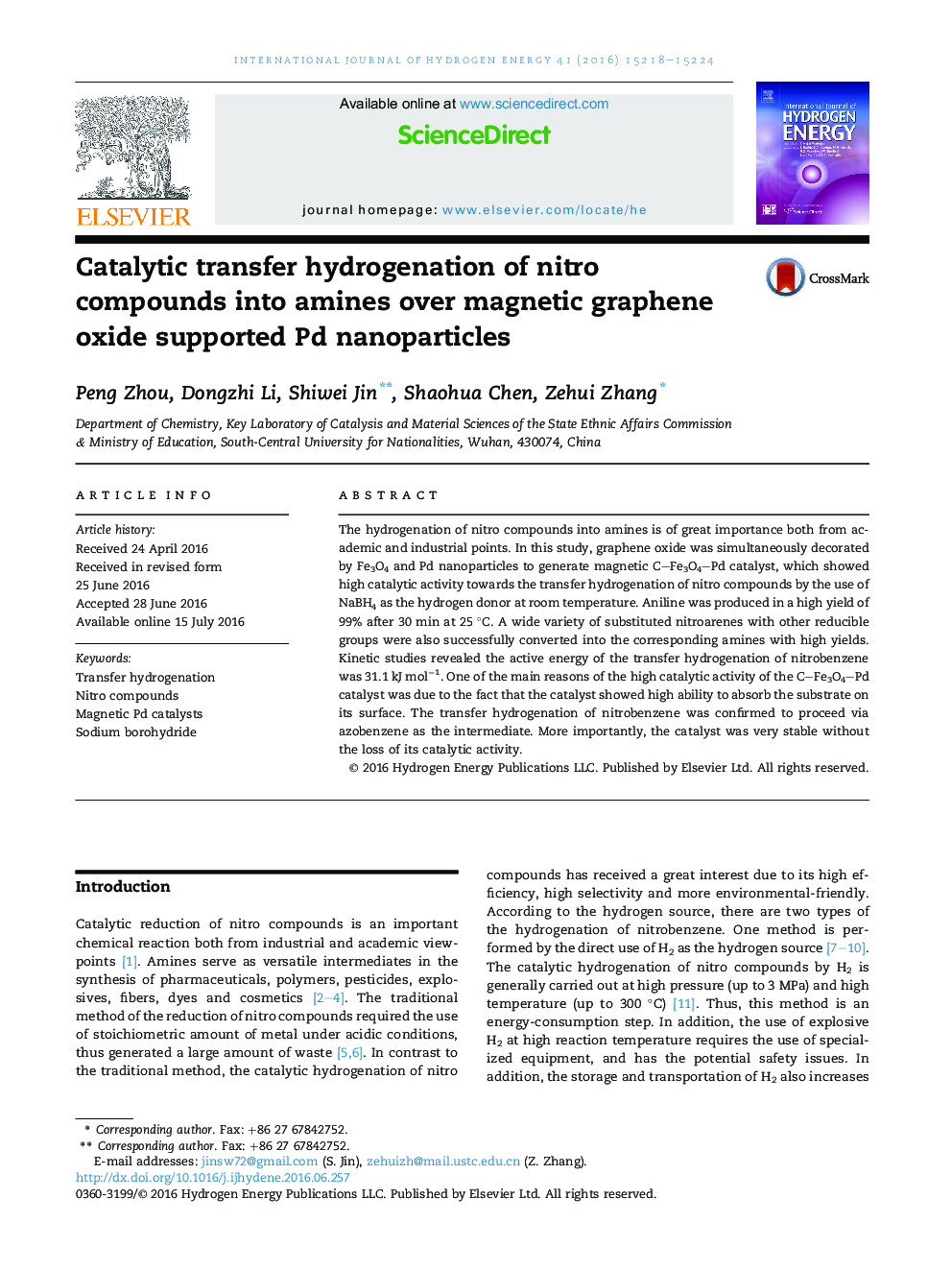| Article ID | Journal | Published Year | Pages | File Type |
|---|---|---|---|---|
| 1270400 | International Journal of Hydrogen Energy | 2016 | 7 Pages |
•The catalytic transfer hydrogenation of nitro compounds was developed.•The C–Fe3O4–Pd catalyst showed high catalytic activity for this reaction.•High aniline high yield of 99% after 30 min at 25 °C by the use of NaBH4.•Substituted nitroarenes were also successfully converted the corresponding amines.
The hydrogenation of nitro compounds into amines is of great importance both from academic and industrial points. In this study, graphene oxide was simultaneously decorated by Fe3O4 and Pd nanoparticles to generate magnetic C–Fe3O4–Pd catalyst, which showed high catalytic activity towards the transfer hydrogenation of nitro compounds by the use of NaBH4 as the hydrogen donor at room temperature. Aniline was produced in a high yield of 99% after 30 min at 25 °C. A wide variety of substituted nitroarenes with other reducible groups were also successfully converted into the corresponding amines with high yields. Kinetic studies revealed the active energy of the transfer hydrogenation of nitrobenzene was 31.1 kJ mol−1. One of the main reasons of the high catalytic activity of the C–Fe3O4–Pd catalyst was due to the fact that the catalyst showed high ability to absorb the substrate on its surface. The transfer hydrogenation of nitrobenzene was confirmed to proceed via azobenzene as the intermediate. More importantly, the catalyst was very stable without the loss of its catalytic activity.
